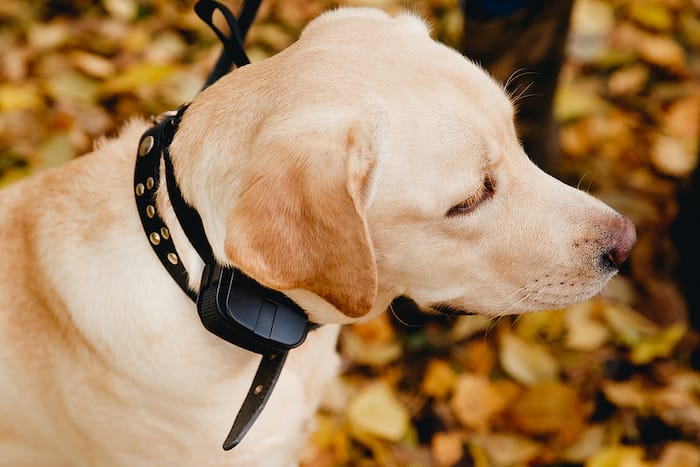In the search for well-behaved canine companions, dog owners are often faced with a myriad of training tools and techniques. Among these, electric dog collars have sparked considerable debate. These devices, which include vibrating dog collars and shock collars, are touted by some as effective means of behavior modification, while others raise concerns about their safety and welfare implications. This article aims to shed light on the use of electric dog collars, exploring their functionality, ethical considerations, and the impact they can have on different types of dogs.
Electric dog collars have come a long way since their inception, evolving from rudimentary devices to sophisticated training aids. They are designed to capture a dog’s attention and discourage unwanted behaviors through a variety of stimuli, including vibration, sound, and static shock. Proponents argue that when used correctly, these collars can be a valuable tool in a trainer’s arsenal, providing a consistent and controlled means of communication with the dog.
However, the use of electric dog collars is not without controversy. Critics argue that they can cause unnecessary pain and stress, potentially leading to behavioral issues rather than solving them. It is essential, therefore, to approach the use of these collars with a balanced perspective, understanding both their potential benefits and limitations. This article aims to provide a comprehensive overview of electric dog collars, helping dog owners make informed decisions about their use in training.

Understanding Electric Dog Collars
Electric dog collars, also known as e-collars or shock collars, are training devices that deliver a form of electronic stimulation to a dog. These collars come in various forms, including vibrating dog collars, which emit a gentle vibration, and shock collars, which deliver a static shock. The intensity of the stimulation can usually be adjusted to suit the sensitivity of the dog and the severity of the behavior being addressed.
The principle behind electric dog collars is rooted in the concept of operant conditioning, a method of learning that employs rewards and punishments to modify behavior. In the case of electric collars, the unpleasant sensation acts as a deterrent, discouraging the dog from repeating undesirable actions. Over time, the dog learns to associate the negative behavior with the sensation and avoids it, leading to improved behavior.
It is important to note that electric dog collars are not intended to be used as a form of punishment. Rather, they are meant to serve as a training aid, providing a clear and immediate signal to the dog that a certain behavior is unacceptable. When used correctly and in conjunction with positive reinforcement techniques, electric collars can be an effective tool in shaping a dog’s behavior.
The Ethics of Using Electric Dog Collars
The ethical debate surrounding the use of electric dog collars is complex. On one hand, proponents argue that these collars can be a humane way to train dogs, especially when other methods have failed. They contend that the brief discomfort caused by the collar is outweighed by the benefits of correcting dangerous or disruptive behaviors, ultimately enhancing the dog’s quality of life.
On the other hand, opponents of electric collars raise concerns about the potential for misuse and over-reliance on these devices. There is a risk that some trainers may rely solely on the collar’s corrective function, neglecting the importance of building a positive relationship with the dog and using positive reinforcement techniques. Additionally, if not used properly, electric collars can cause physical harm and psychological distress to the dog.
To navigate these ethical considerations, it is crucial for dog owners and trainers to use electric collars responsibly. This means thoroughly understanding the device’s operation, starting with the lowest possible setting, and gradually adjusting the intensity as needed. It also involves using the collar as part of a comprehensive training program that includes positive reinforcement and ensures the dog’s overall well-being.
The Impact on Different Dogs
Electric dog collars are not a one-size-fits-all solution. Their effectiveness and impact can vary significantly depending on the individual dog’s size, breed, temperament, and sensitivity. For example, a large, high-energy breed may respond differently to the stimulation than a small, sensitive dog. It is crucial for dog owners to consider these factors when deciding whether to use an electric collar and to adjust the settings accordingly.
Age is another important consideration when using electric collars. Puppies and younger dogs are still developing both physically and mentally, and the use of electric collars on them can be more controversial. While some trainers advocate for their use in early training, others caution against it, suggesting that positive reinforcement methods are more appropriate for younger dogs. Conversely, older dogs may have different sensitivities and health concerns that need to be taken into account.
The key to using electric dog collars effectively across different dogs is customization and moderation. It’s essential to start with the lowest possible setting and gradually increase the intensity only if necessary. Regular monitoring and adjustment of the collar’s settings can help ensure that the dog remains comfortable and that the training remains humane and effective.

Behavioral Modification Techniques
The use of electric dog collars is just one part of a broader behavioral modification strategy. These devices are often used in conjunction with other training methods, such as positive reinforcement, to achieve the best results. For example, while the collar may provide a corrective stimulus for unwanted behavior, rewarding the dog for desirable behavior with treats or praise reinforces positive actions.
One common scenario where electric collars are used is in addressing excessive barking. In this case, the collar can provide an immediate correction, helping the dog to associate the barking with the unpleasant sensation and encouraging them to remain quiet. However, it’s also important to understand the underlying causes of the barking and address them through training and environmental changes.
Other behaviors that electric collars can help address include aggression towards the postman, inappropriate toileting, and excessive jumping. In each case, the collar should be used as part of a holistic approach that includes understanding the motivation behind the behavior, providing alternative outlets for the dog’s energy, and reinforcing positive behaviors.
Electric Collars and Other Animals
When using electric collars, it’s important to consider not only the impact on the dog wearing the collar but also on other animals in the environment. For example, if a dog is being trained to reduce aggression towards other dogs, the use of an electric collar must be carefully managed to ensure that it does not inadvertently increase stress or aggression in the other animals.
In multi-pet households, the use of electric collars can be particularly challenging. It’s essential to ensure that the collar is triggered only by the behavior of the dog wearing it and not by the actions of other pets. This may require careful adjustment of the collar’s sensitivity settings and close supervision during training sessions.
Choosing the Right Collar
Selecting the appropriate electric dog collar for your pet is crucial for effective and humane training. There are various types of collars available, including bark collars, training collars, and e-collars for dogs, each designed for specific training purposes. When choosing a collar, consider the following factors:
- Type of Stimulation: Decide whether a vibration, sound, or static shock collar is most suitable for your dog’s training needs. Vibration collars can be effective for sensitive dogs, while static shock collars may be necessary for more stubborn behaviors.
- Intensity Levels: Look for a collar with a range of intensity levels. This allows you to start with the lowest level and gradually increase it if needed, ensuring the comfort and safety of your dog.
- Size and Fit: Ensure the collar fits your dog properly. A collar that is too loose may not deliver consistent stimulation, while one that is too tight can cause discomfort or injury.
- Waterproofing: If your dog spends a lot of time outdoors or in wet conditions, consider a waterproof collar to prevent damage and ensure consistent performance.
- Battery Life: Consider the battery life of the collar, especially if you plan to use it for extended training sessions or if it will be worn frequently.

Alternatives to Electric Dog Collars
While electric dog collars can be effective for certain training scenarios, they are not the only option available. In some cases, other training methods may be more appropriate or preferred. Some alternatives include:
- Positive Reinforcement: Using rewards such as treats, praise, or play to reinforce desirable behaviors can be a highly effective and humane training method.
- Clicker Training: This method uses a small handheld device that emits a click sound to mark the desired behavior, followed by a reward.
- Remote Training Collars: These collars use a remote control to deliver a vibration or sound as a cue or correction, without the use of static shock.
- Training Classes: Professional training classes can provide guidance and support for both you and your dog, helping to address behavioral issues in a structured environment.
Incorporating Electric Collars into a Holistic Training Regime
Electric dog collars should not be used as a standalone solution for dog training. Instead, they should be integrated into a holistic training regime that considers the overall well-being of the dog. This approach includes:
- Understanding Your Dog: Spend time getting to know your dog’s personality, behavior, and learning style. This will help you tailor your training approach to their individual needs.
- Setting Clear Goals: Define what you want to achieve with your training and set realistic goals. This will help you stay focused and measure your progress.
- Consistency: Consistency is key in dog training. Ensure that everyone involved in your dog’s care is using the same commands and training methods.
- Patience: Training takes time and patience. Be prepared for setbacks and celebrate small victories along the way.
Safeguarding Your Dog’s Welfare
The welfare of your dog should always be the top priority when using electric dog collars. To ensure their safety and well-being, consider the following tips:
- Proper Fitting: Make sure the collar is fitted correctly, following the manufacturer’s instructions. It should be snug but not too tight, allowing you to fit two fingers between the collar and your dog’s neck.
- Monitoring: Regularly check your dog’s neck for any signs of irritation or injury from the collar. If you notice any issues, discontinue use and consult your veterinarian.
- Gradual Introduction: Introduce the collar gradually, starting with the lowest intensity and only using it for short periods. This will help your dog adjust to the sensation and reduce the risk of stress or anxiety.
- Professional Guidance: If you’re unsure about how to use an electric collar safely, seek advice from a professional dog trainer or behaviorist.
Integrating Electric Collars with Kolooky.ie’s Offerings
While this article aims to provide a balanced view on the use of Kolooky bark collars, it’s worth mentioning that platforms like kolooky.ie offer a range of pet products, including electric collars, that can be part of responsible pet ownership and training. When considering the purchase of an electric collar, it’s important to choose a reputable supplier that provides high-quality, safe, and effective products. Kolooky.ie is committed to offering a selection of electric collars that meet these criteria, helping dog owners find the right tools for their training needs.
In addition to electric collars, kolooky.ie also offers a variety of other pet supplies, including toys, treats, and training aids, to support a holistic approach to pet care and training. By integrating electric collars with other products and resources available on the platform, dog owners can create a comprehensive training regime that promotes the well-being and happiness of their furry companions.
Conclusion
Electric dog collars can be a valuable tool for improving your dog’s behavior safely, provided they are used responsibly and as part of a balanced training approach. It’s important to consider the individual needs and characteristics of your dog, choose the right collar, and integrate it with other positive reinforcement techniques. By prioritizing your dog’s welfare and using electric collars judiciously, you can enhance your training efforts and foster a harmonious relationship with your canine companion. Remember to always stay informed, seek professional guidance if needed, and approach training with patience and empathy.
As an industry expert, I want to emphasize that while electric dog collars can be effective, they are not a magic solution for all behavioral issues. Training a dog requires a commitment to understanding their needs, establishing clear communication, and fostering a bond based on trust and respect. Electric collars, when used correctly, can be a part of this process, but they should never replace the essential elements of patience, consistency, and positive reinforcement.
It’s also important to stay updated on the latest research and best practices in dog training. The field is continually evolving, and what is considered acceptable today might change in the future. As responsible dog owners and trainers, we must be open to learning and adapting our methods to ensure the well-being of our canine companions.
In conclusion, electric dog collars can be a useful tool in the right circumstances, but they are not a one-size-fits-all solution. By understanding the nuances of their use, considering the individual needs of your dog, and integrating them into a holistic training regime, you can improve your dog’s behavior safely and effectively. Remember, the goal is not just to correct unwanted behaviors, but to foster a positive and rewarding relationship with your dog that will last a lifetime.
